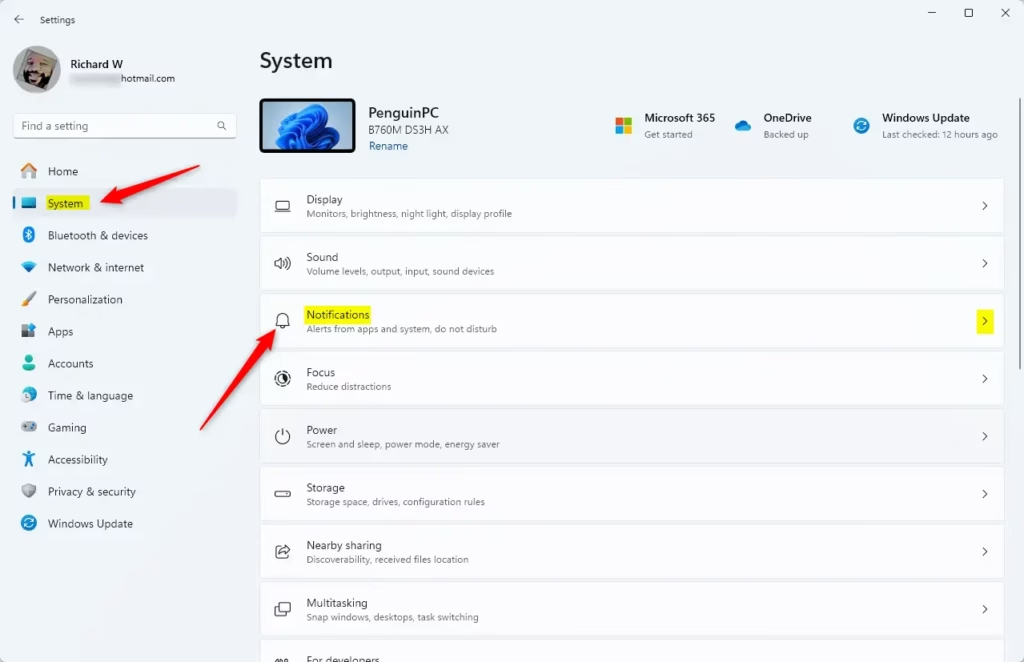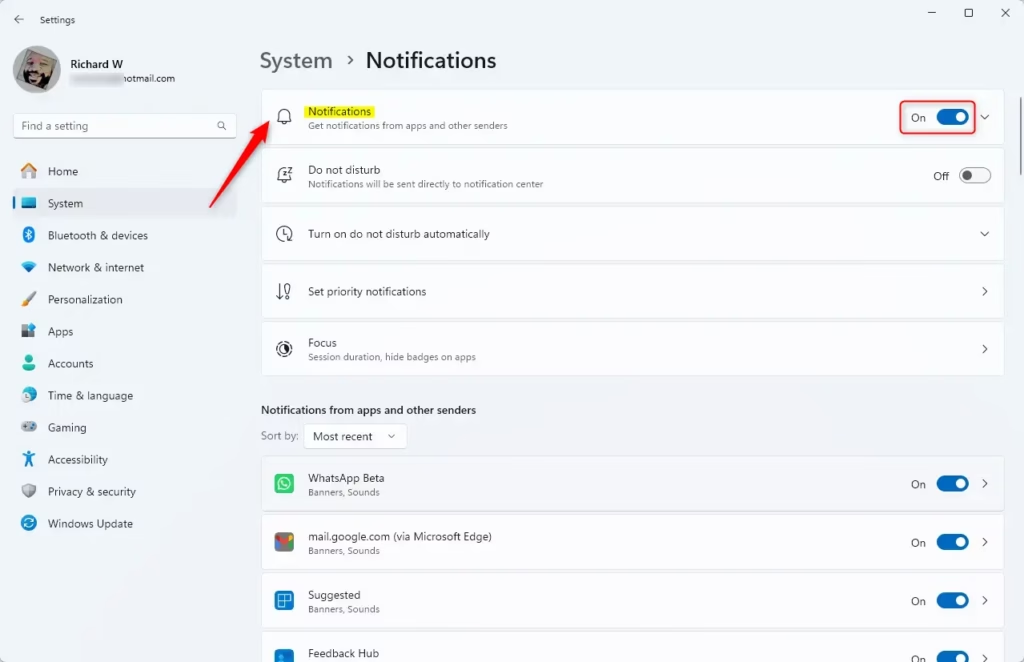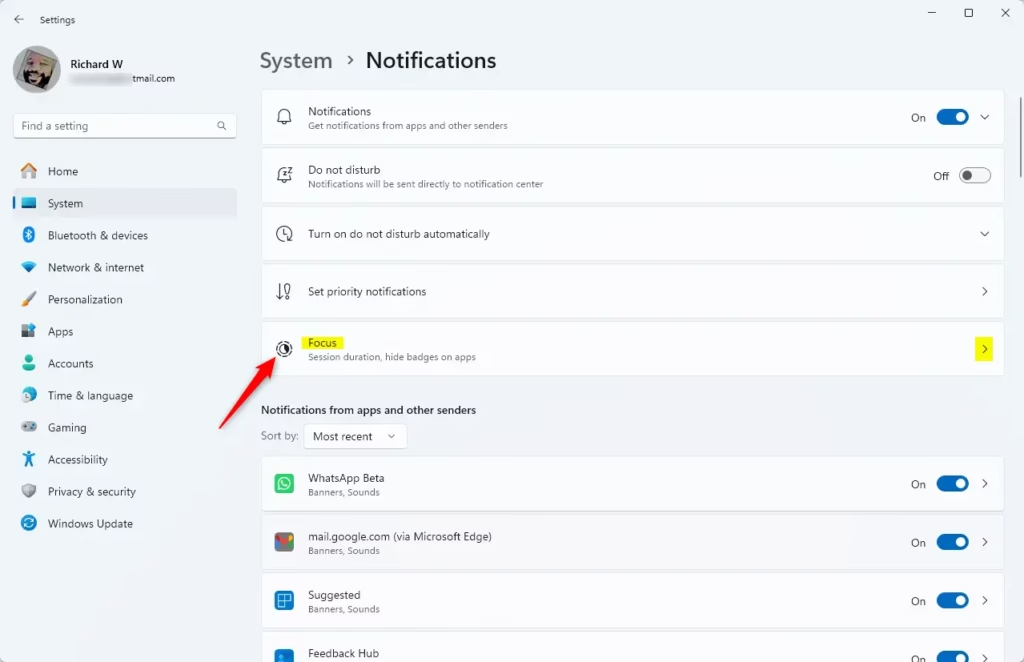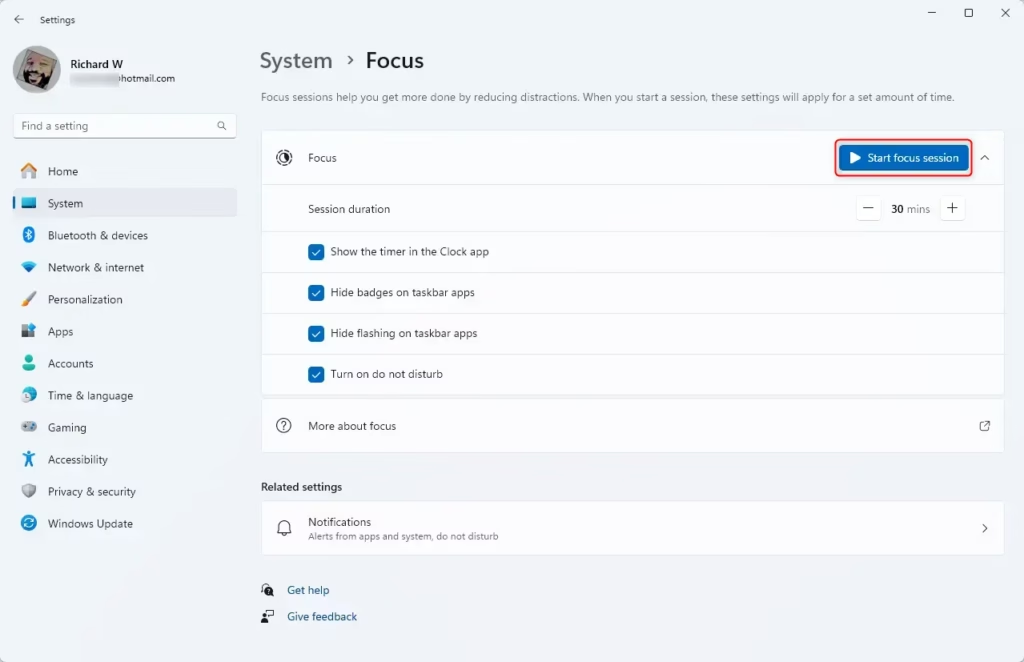This article discusses how to disable all notifications in Windows 11.
Windows 11 offers a new way to present notifications for apps and the desktop, helping you stay informed about everything happening on your device. However, some notifications can be annoying and are easily disabled.
Notifications in Windows can be distracting, annoying, or overwhelming, especially when trying to focus on a task.
Some notifications may be irrelevant to your work, while others might contain sensitive information you prefer not to display on your screen.
Disabling notifications can help you concentrate on your work while enhancing your privacy and security.
With Windows 11 notifications, you can:
- Show notifications on the lock screen.
- Show reminders and incoming calls on the lock screen.
- Show Windows welcome experience after an update.
- Get tips, tricks, and suggestions as you use Windows
- Get notifications from apps and features
and more
Disable notifications from the System app
Windows allows users to turn off notifications to reduce distractions. Below is how to do it.
First, open the Windows Settings app.
You can do that by clicking on the Start menu and selecting Settings. Or press the keyboard shortcut (Windows key + I) to launch the Settings app.
When the Settings app opens, click the System button on the left. Then, select the Notifications tile on the right to expand it.

On the System > Notifications settings page, select the Notifications tile and toggle the switch to enable or disable notifications in Windows.

All notifications have now been disabled, as shown in the screenshot above.
Start a Focus Session
Alternatively, you can use Focus to minimize distracting notifications when concentrating. It is configured by default to activate automatically under specific conditions.
Rather than disabling all important notifications, use Focus to manage them better.
Focus is a feature in Windows that helps you concentrate by eliminating notifications. To manage notifications using Focus, navigate to System > Notifications and select the Focus tile to expand it.

Next, start a focus session to stop receiving notifications in Windows.

That should do it!
Conclusion:
Disabling notifications in Windows 11 can significantly enhance your productivity and privacy. Here are the key takeaways:
- Notifications can be distracting and often irrelevant to your tasks.
- Windows 11 allows you to manage and disable notifications through the Settings app easily.
- You can toggle notifications on or off for the entire system or specific apps.
- Using the Focus feature can help minimize distractions without turning off all notifications.
- Focus sessions allow you to concentrate better by temporarily halting notifications.
By following these steps, you can create a more conducive working environment tailored to your needs.

Leave a Reply Cancel reply